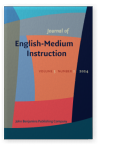Vol. 3:2 (2024) ► pp.236–259
English for specific purposes in surging English-medium instruction contexts
English-medium instruction (EMI) research increasingly reports on students’ language-related challenges and a lack of academic and language support classes, collaboration between content and language teachers and overall teacher training. Our study explores EMI in Japan and China, two contexts where EMI has been referred to as emerging but is now “surging.” In these contexts, EMI is closely linked to English language proficiency goals, yet research on supporting students remains scarce. Data were collected via interviews and focus groups with students, English teachers and content teachers, who provided insights into approaches to EMI policy implementation, stakeholders’ attitudes, and the need for English for specific purposes (ESP) and English for specific academic purposes (ESAP). The results provide much needed insights for evidence-informed EMI policy implementation, curriculum development and teacher training. The study also provides insights into institutional infrastructure conducive to EMI policy, with findings revealing ESP needs of EMI students and the training needs of teaching staff. The study presented in this paper furthers the work that has been conducted in Anglophone settings on the complexity of ELT practitioner roles. The results also provide directions for future research.
Article outline
- Introduction
- Literature review
- Methods
- Data collection procedures
- Data analysis procedures
- Findings
- Assessment of students’ language-related needs entering EMI programmes (RQ1)
- ESP support (RQ2)
- What are staff and students’ perceptions of ESP support? (RQ3)
- Discussion
- Teacher roles and identity in EMI contexts
- EMI programme structure
- Conclusion and implications
-
References
For any use beyond this license, please contact the publisher at [email protected].
